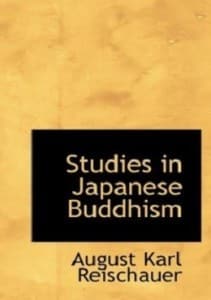
Studies in Japanese Buddhism. When Buddhism was introduced into Japan in the sixth century it had passed from India into the lands east of the Caspian Sea and then turned to the east, spreading through China and Korea, and all the time gathering up all that it found on its way. For example, its canonical writings by this time had assumed the dimension of a good sized library containing upward of 5000 books. The contents of these books, written during a period of a thousand years and by peoples of various stages of civilization, are naturally very varied and often flatly contradictory even in matters fundamental. For Buddhism and Japan has perhaps more in it that is contradictory to the religion of the Buddha than what is in agreement with it. In fact, Northern Buddhism, considered from almost any standpoint, embraces a wider latitude of teachings and practices than any other religious system. This book seeks to describe the complexity and history of Japanese Buddhism.
Understanding Japanese religion
From the book:
To understand Japanese Buddhism even in its main outline is not a simple matter. It is not only that in Japan Buddhism has taken up into itself everything which it found in its way, which makes it difficult for the student, but because it had a history of a thousand years before it reached these shores, and during those long centuries it had been winning its victories by this same method of compromise. That is, when Buddhism was introduced into Japan in the sixth century it had passed northwestward from India into the lands east of the Caspian Sea and then turned towards the east, spreading gradually through China and Korea, and all the time gathering up into itself, like a rolling snowball, all that it found on its way. For example, its canonical writings by this time had assumed the dimension of a good sized library containing upward of 5000 books. The contents of these books, written during a period of a thousand years and by peoples of various stages of civilization, are naturally very varied and often flatly contradictory even in matters fundamental. It is not strange, then, that a leading authority on Buddhism, in trying to define what the religion is, could only say that it is the religion founded by the Buddha. Even this was saying too much, for the Buddhism of China and Japan has perhaps more in it that is contradictory to the religion of the Buddha than what is in agreement with it. In fact Northern Buddhism, considered from almost any standpoint one cares to take, embraces a wider latitude of teachings and practices than any other religious system. Even in regard to its inner spirit and life, which is the true measure of any religion, Buddhism presents a bewildering spectacle. It is more like a junk shop where one can find almost anything-good, bad and indifferent. There is little that has ever entered the heart or mind of man which does not find its counterpart in Buddhism somewhere.
 Studies in Japanese Buddhism
Studies in Japanese Buddhism


Nam-lin Hur has described the support of the Soto for the occupation of Korea in the beginning of the 20th century.
I am a researcher on oriental religions specially Buddhism both at India and at China &
Japan. But I would like to read their original
sacred books. I hope you help me in this way.
I have published a book on Buddha’a life and Ideas. My book name was ” In looking for sky’s roots ” .
YOURS
A. H. Randjbar
Thank you, could we post your book here on holybooks.com?